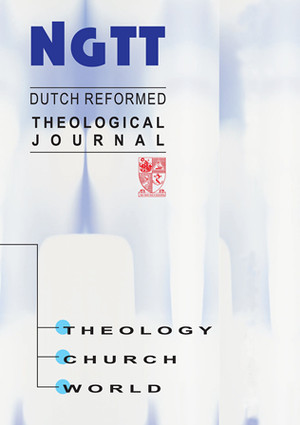Gentiles in Matthew’s infancy narrative
DOI:
https://doi.org/10.17570/ngtt.2010.v51n1.a09Keywords:
Gospel as narrative, Gospel beginning, Jewish-Christian,Abstract
Scholars have frequently argued that the great commission rather than the beginning should be regarded as the key to the understanding of Matthew’s narrative. Yet, the beginning of the gospel has several themes and elements that match with those of the ending. In some sense, the infancy narrative may be designated as a thematic prelude of the Gospel, similar to the exordium in classical rhetorical speeches. Therefore, the beginning and the ending usually match each other, even though the clues in the beginning are tiny, sometimes even unnoticeable by itself. The themes grow big to be noticeable and become more apparent as the story unfolds, until they are fully grown in the great commission at the end.Published
2010-06-30
How to Cite
Lee, K., & Viljoen, F. (2010). Gentiles in Matthew’s infancy narrative. NGTT | Nederduitse Gereformeerde Teologiese Tydskrif, 51(1&2). https://doi.org/10.17570/ngtt.2010.v51n1.a09
Issue
Section
Articles | Artikels
License
Copyright of all NGTT material belongs to the Pieter de Waal Neethling Trust (PDWN Trust). The PDWN Trust is a trust fund established in 1932 with the aim of promoting quality theological research and publications.
The PDWN Trust pledges to maintain a legitimate scholarly record of the author's work and to defend the author's article against plagiarism and copyright infringement.
The PDWN Trust is committed to full Open Source publishing. This means that all articles published in NGTT will gradually be made freely available online. Authors maintain the right to:
- Share and self-archive their work.
- Make printed copies of their article for educational use.
- Present their article at a meeting or conference and distribute printed copies of the article
- Adapt and expand their published journal article to make it suitable for their thesis or dissertation.
- Republish the article (ensuring that the original article is cited as published in NGTT).
For any questions or queries in this regard, please contact the Editor.


